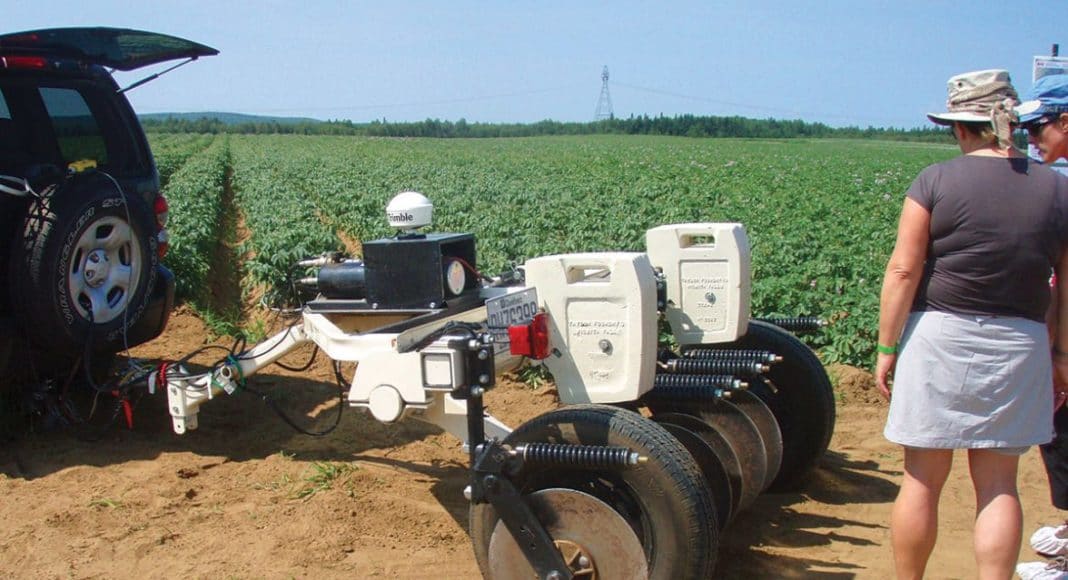[deck]A report from the 97th annual meeting of the Potato Association of America, held this year in historic Quebec City, Que.[/deck]
The 97th annual meeting of the Potato Association of America was held at the Hotel Chateau Laurier in Quebec City, Que., from July 28 to Aug. 1. It was truly an international event, with 250 delegates and companions from Canada, United States, Mexico, Brazil, Australia, Scotland, South Korea and China in attendance. With 102 presentations and dozens of poster exhibitions, the conference covered a broad spectrum of topics including breeding and genetics, physiology, extension, certification, production and management, and plant protection.
The meeting began with a half-day symposium entitled Bacterial Disease Issues: Basic to Applied Aspects. Leslie Wanner of USDA’s Agricultural Research Service described how the hundreds of Streptomyces or scab bacteria species play a vital role in soil health by acting as decomposers. Less than one per cent are pathogens, the best known to potato growers being Streptomyces scabies or common scab. This disease is difficult to manage, with cultivar resistance the best control measure available so far. Ways to regulate the production of thaxtomin, the common scab toxin responsible for pathogenicity in potatoes, are currently being studied.
Joseph Munyaneza, another USDA-ARS researcher, described the devastating effects of zebra chip, its spread northward into the United States, and control measures for the disease, which are targeted against the zebra chip vector — the potato psyllid or Bactericera cockerelli.

Ian Toth of Scotland’s James Hutton Institute described his work sequencing the genome of Pectobacterium atrosepticum, the causal agent of soft rot and blackleg. He has successfully isolated genes involved with triggering or suppressing plant disease resistance, as well as how P. atrosepticum bacterium attaches to and colonizes plant roots. This knowledge has the potential to be used to develop potato cultivars that are fully resistant to soft rot.
Aeroponic Minituber Production in China
As a physiologist involved in seed potato production, I found the presentation on aeroponic minituber production in China by Peter Vander Zaag of Ontario’s Sunrise Potato very interesting, as well as transferable to North America. To avoid bacterial and fungal diseases that threaten mini-tubers grown in soil, potato plants are suspended in mist chambers in greenhouses. This method produces large numbers of minitubers every year and requires only two subsequent field multiplications, thus rapidly flushing material through the system with minimal buildup of disease.
The conference also featured a field tour to Patates Dolbec, a family-owned business in Saint-Ubalde, Que., that in three generations has grown to become the largest potato producer in Eastern Canada. Our PAA group was among 750 people touring the farm that day. Field research at Patates Dolbec reflects the progressive nature of the business, and includes work on potato cyst nematode control methods, spore captors used to predict the onset of late blight, a weather station to monitor crop evapotranspiration rates, a plane-mounted camera for aerial infrared readings of canopy health and soil mapping equipment.
All in all, the Quebec City gathering was informative, interesting and a great opportunity to network with potato people from around the globe. The 98th annual meeting of the PAA is in Spokane, Wash., from July 27 to 31, 2014. We hope to see you there.












